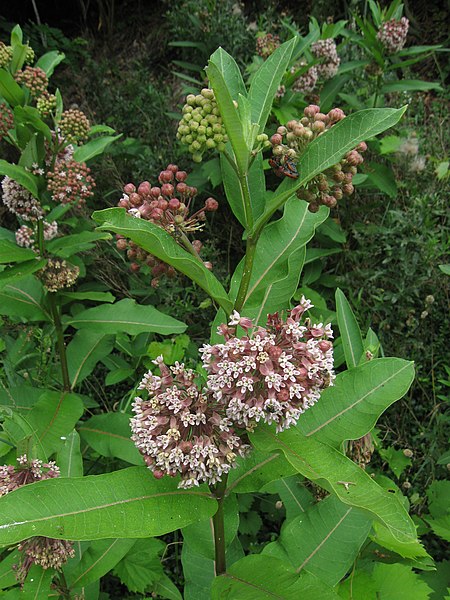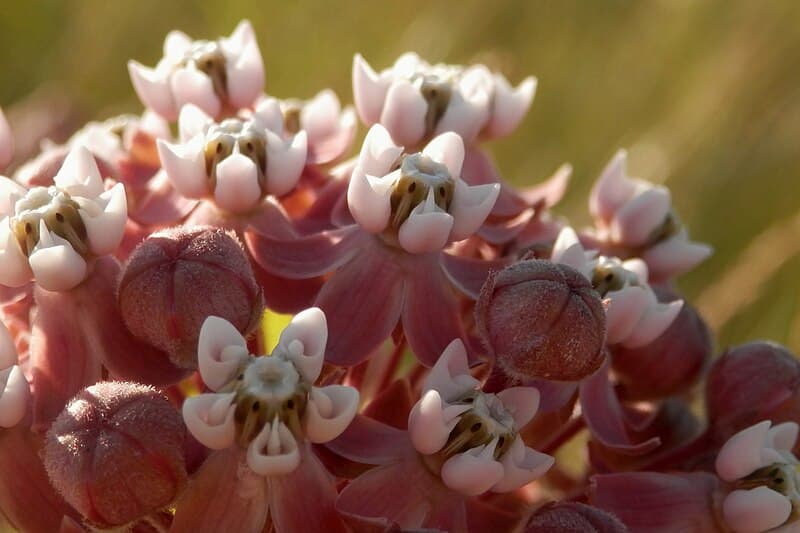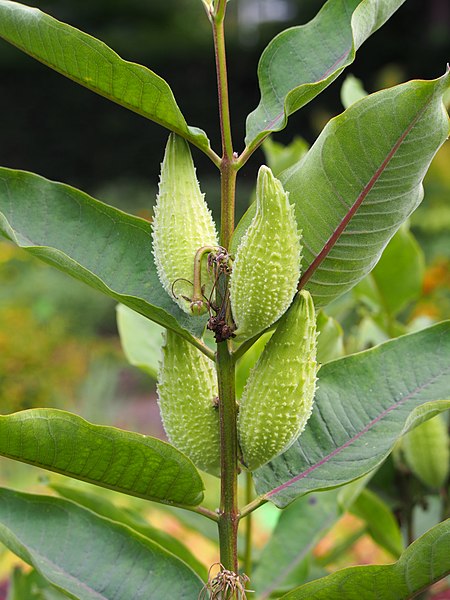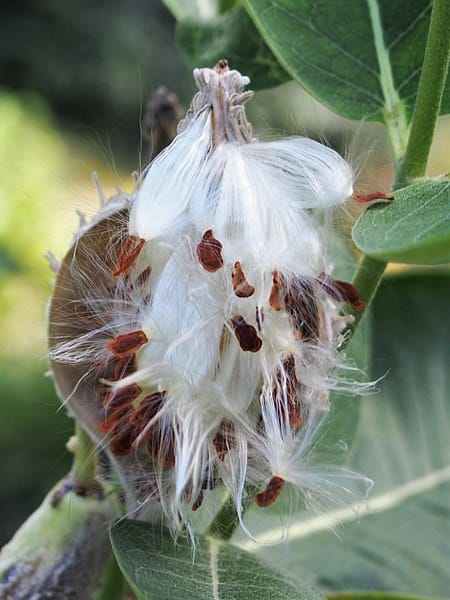Common Milkweed Identification – Asclepias syriaca
Heads up
Have you ever walked through a field and come across a tall plant with pink, star-shaped flowers and broad leaves? There’s a good chance you’ve stumbled upon the Common Milkweed, also known as Asclepias syriaca. The Common Milkweed is part of the Apocynaceae family, commonly referred to as the Dogbane family. This family is known for having many species that are used medicinally or are ornamental. You might also hear some people call this plant by its other common names: Silkweed or Milkplant.
Common Milkweed: Key Parts in Photos





Where to find it
The Common Milkweed is native to North America and can be spotted in various environments: sunny fields, edges of woods, or even along shores. It can grow in both part shade and full sun. The plant usually grows between 2 to 5 feet tall, so it’s pretty noticeable when in full bloom.
How to identify Common Milkweed
The leaves of the Common Milkweed are big – up to 8 inches long. They’re mostly oval-shaped and have this unique creamy white or pink line running down the middle, called the midrib. The smaller veins on the leaf create a border effect because they connect but don’t go all the way to the leaf’s edge. The leaves are simple, meaning each leaf grows on its own from the stem and not in groups or leaflets. They grow opposite to each other on the stem. Feel the underside of these leaves; they’re softly hairy. As for the stem, it’s typically unbranched and can be a bit hairy too.
Between May and September, this plant boasts flowers that will grab your attention. They’re grouped in round clusters, about 2 inches across, and they emerge right where the leaves join the stem. Each flower is small and has five downward-curving petals. These flowers can be pale pink or a deeper shade. The tips of the star-shaped crown in the middle are often cream-colored.
Once the flowering is over, the Common Milkweed develops pods, or capsules. These are green, bumpy, and can grow to be 5 inches long. Inside these pods? Loads of flat, brown seeds. Each seed comes with a papery outer layer and a fuzzy tail-like structure, which is like a mini parachute. These are designed by nature so that when the pod splits open, the seeds spread out and are carried away by the wind. If you ever get a chance, check them out – they’re layered in the pod like fish scales.
